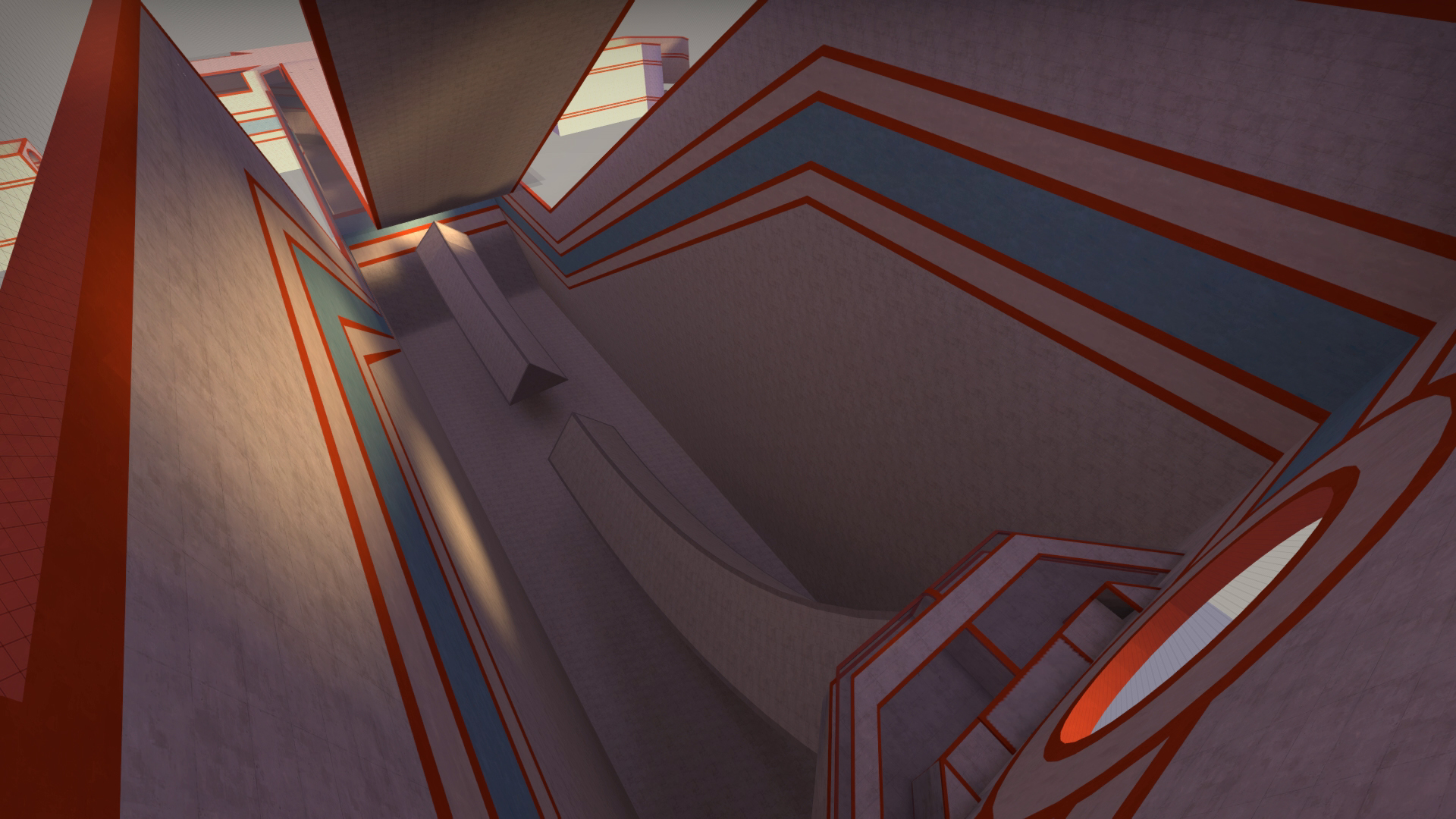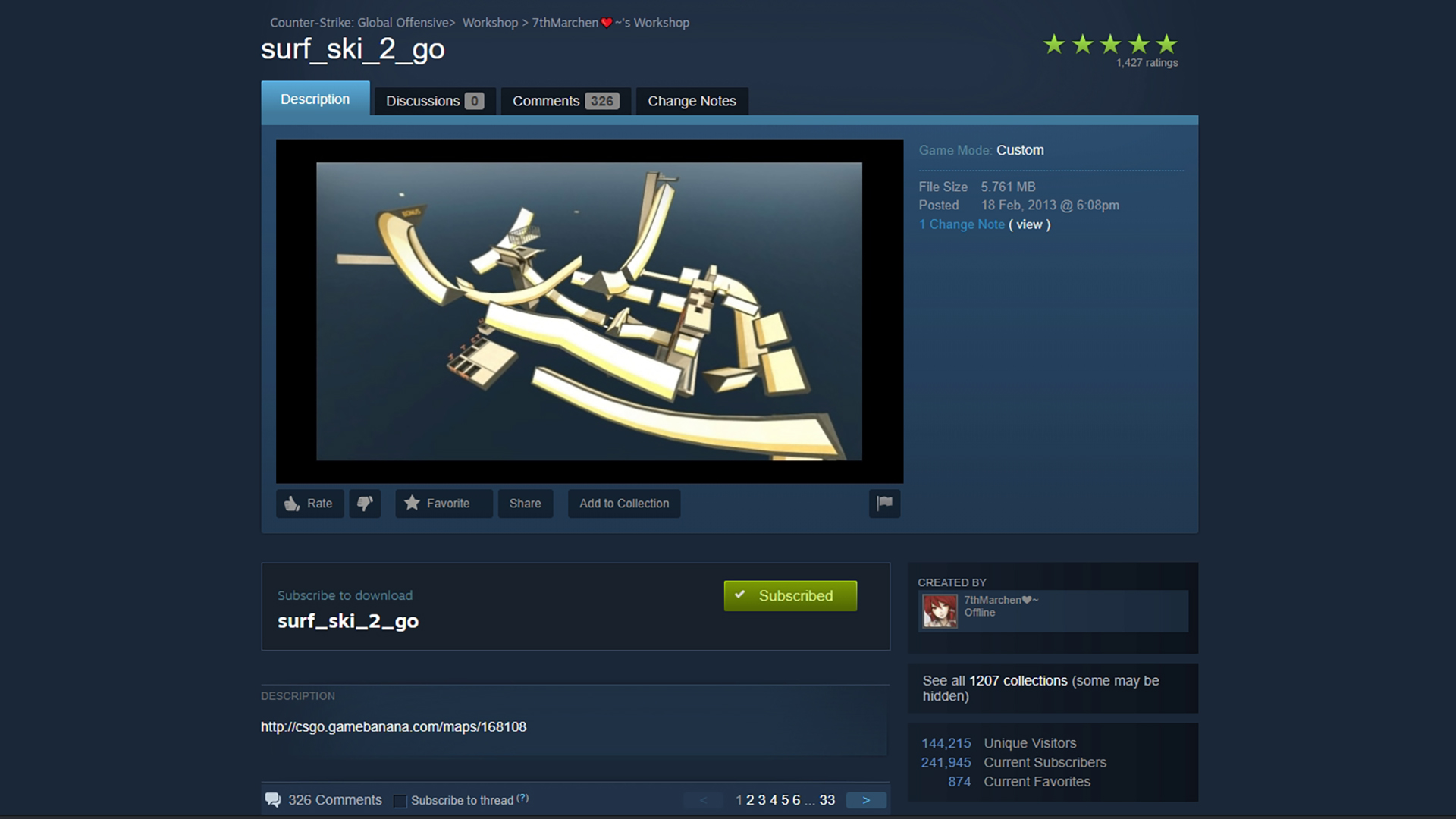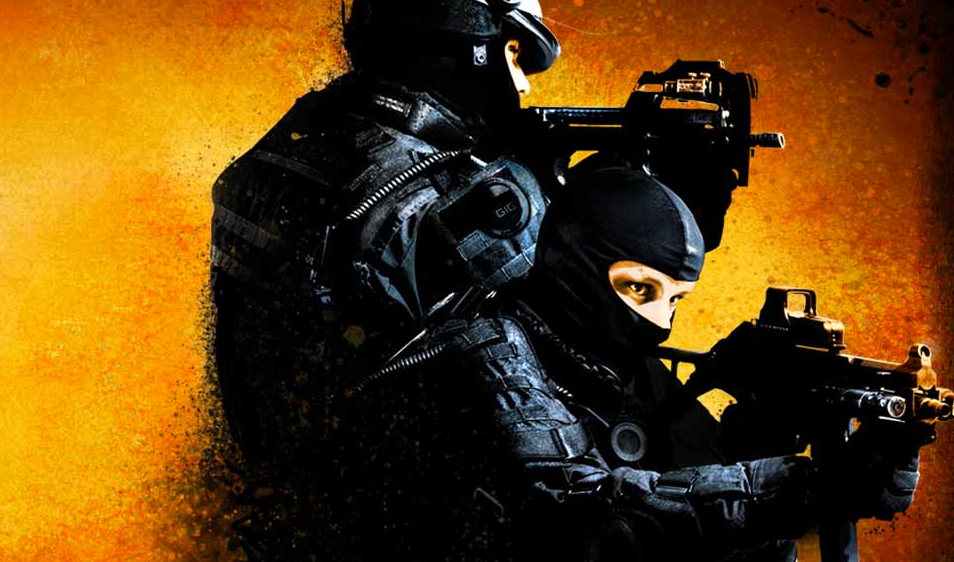How to surf in CS:GO
Take a break from competitive matches in CS:GO surf maps, and catch some concrete waves.

Interested in learning how to surf in CS:GO? Surfing has been in Counter-Strike since its 1.6 days and still manages to hold its own as one of the more popular custom modes in Global Offensive. You can even watch the guy who invented Counter-Strike surf maps work on his upcoming map, surf_eventide, on Twitch.
Surfing is very different to a good, old-fashioned competitive CS:GO match. For one thing your feet usually remain firmly on the floor, whereas 'surfing' encourages you to slide along ramps and make smooth turns. Not only is it fun, but it also improves your mouse control and movement, which is a nice bonus for when you hop back into regular matches.
CS:GO surf servers and maps are frequently shared by the community, featuring crazy courses that dare you to zoom through them as efficiently as possible. Servers introduce a competitive edge, whereas Steam Workshop maps are more relaxing to glide through on your own. So, let's ditch Dust2's raucous bombsites and venture into the slippery realm of surfing.
How to surf in CS:GO
Surfing in CS:GO feels like a strange adjustment, but with some practice you'll be hurtling down steep ramps in no time. The first hurdle with surfing is managing to stay on the ramp while you're moving at speed.
Strafing
To begin with, just focus on using your A and D keys to strafe left and right, and your mouse to move in the correct direction. After spawning in a server, walk to the edge and jump down onto the ramp. The goal is to essentially stick to the side of the ramp as you zoom along it. So, if you're traveling along the left side of the ramp, hold D to continue skimming the surface, and vice versa.
The lower portion of the ramp is the golden zone for smooth surfing, but you need to speed up to propel yourself across gaps between each ramp. Strafe upwards in a fluid sweep with your mouse to reach the upper portion of the ramp just before you leave it to land on the next one without compromising your speed.
The biggest gaming news, reviews and hardware deals
Keep up to date with the most important stories and the best deals, as picked by the PC Gamer team.
Distances between ramps vary across maps, so don't be discouraged if you can't clear a complicated level on the first try. Keep at it and you'll eventually find it much easier to judge. Small adjustments using the A and D keys and smooth gestures with your mouse will keep you on track.
Turning
Once you're comfortable with the basics of movement you can begin to attempt turns. Turning requires a harmonious balance between your key inputs and the direction you move your mouse. For example, if you're about to make a left turn, guide your crosshair to the left, while holding A. Pressing the wrong key will abruptly halt your momentum and could wipe you out.
More advanced players also recommend mastering the art of 'bhopping'. Also known as 'bunny hopping' or 'strafe-jumping', this is the action of timing your jumps as you strafe to move faster than usual. It's easy to mistime your bunnyhops which make this skill especially tricky to learn. Of course, there's no beating a deliberate aim-training session if you really want to up your competitive game stats, but deepening your understanding of movement in CS:GO can only help.
How to find CS:GO surf servers
The easiest way to get into surfing is by joining a community server, and there are different types depending on what you're looking for. Skill Surf servers challenge you to race to the end of the level as quickly as possible, whereas Combat servers reintroduce weapons to the fray. Here's how to join one:
- Launch the game and select Play CS:GO.
- Choose the Community Server Browser option in the drop-down menu.
- Type surf in the search bar at the bottom, click on a server from the list, and click Connect to join the server.
Servers usually list helpful information in their title to make it easier to find what you're looking for. Creators often distinguish their difficulty level by structuring them into tiers: Tier 1 is very easy, whereas Tiers 5 and above are considerably more challenging. When you join a server for the first time, it may take a little while to download the assets, but after a few moments you can hop in and get started.
If you're unsure where to start, select a server that already has a few players on it (the number is displayed on the right side of the server list) and try to make it to the end of the level. Some servers let you surf against other players, and striving to top its leaderboard with an impressive time is a good place to start.

How to find CS:GO surf maps

Best CS:GO skins: FPS style
CS:GO ranks: How they work
How to surf in CS:GO: Tips and servers
It's possible to practice surfing on offline surf maps, but you need to adjust your game settings to do so. Servers usually implement these commands for you as you enter the map, but you'll need to set them yourself on offline maps.
Most highly rated Steam Workshop maps list the commands you need to input in the description. For best results, tweak these settings to suit your personal preferences, particularly the 'airaccelerate value'—this can be lowered to make things more challenging. Steam user Twilight has shared a helpful list of commands to help you get started. Open the developer console, paste these commands in, and hit Enter to confirm.
To find surf maps, head to the Steam Workshop, add the CS:GO filter, and type surf. Then click the green subscribe button on the maps you find appealing.
Once you're ready to try them, launch CS:GO and select Workshop Maps from the dropdown menu. Select a map and hit go, but remember to paste in those commands above before attempting the level. Here's a selection of CS:GO surf maps I've been trying to ace:
As PC Gamer's guides writer, Emma is usually juggling several games at once. She loves competitive first-person shooters like CS:GO and Call of Duty, but she always has time for a few rounds of Hearthstone. She's happiest when she's rescuing pugs in Spelunky 2.


